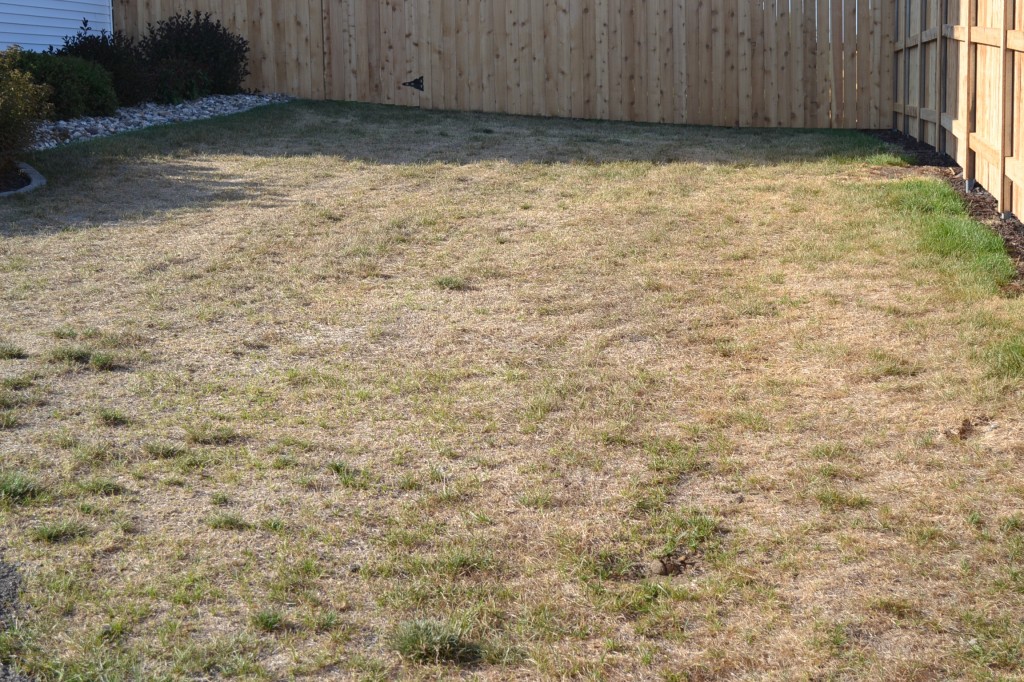If you live in eastern Iowa chances are that your lawn is experiencing a severe drought. While driving though the Cedar Rapids area today I noticed multiple properties that were completely toast. Not a weed in the yard, but the entire grass area was burnt. I also noticed multiple lawns that were irrigated, most of which were lacking head to head coverage. It is always a good idea if you have a irrigation system to periodically check the coverage of your irrigation heads or lack there of. Some systems have not been touched since spring and need a quick run through to make sure that the entire area is getting watered. Severe drought conditions will make any missed irrigated areas quite noticible.
Severe drought in eastern Iowa lawns.
It is important to keep an eye on your turf grass through a drought because your grass is already stressed by the lack of moisture. Having a weak turf allows for funguses and insects to invade your lawn, in most cases going unnoticed. The key to stopping the spread of fungus or insect damage is to catch it as soon as possible. If you have not mowed your lawn in a couple of weeks, it might be a good time to do a quick walk around and see if you notice anything unusual. If you see unusual brown areas in your lawn, stop and examine a few grass blades. Most drought conditions will just wilt the grass blade and brown it out. If you think that your lawn has a fungus, you should do a visual inspection of the blade to see if you notice any discoloration or lesions.
About this time of year is when you can expect to see grub damage in your lawn. When you lawn is stressed from drought, grub damage may go unnoticed. If you notice that your turf grass easily peels back when you pull on it, do a visual inspection to see if any grubs are visible. Also watch for damage caused by raccoons or other animals. Chances are if you have a high amount of grubs in your lawn, you might see damage from these animals.

